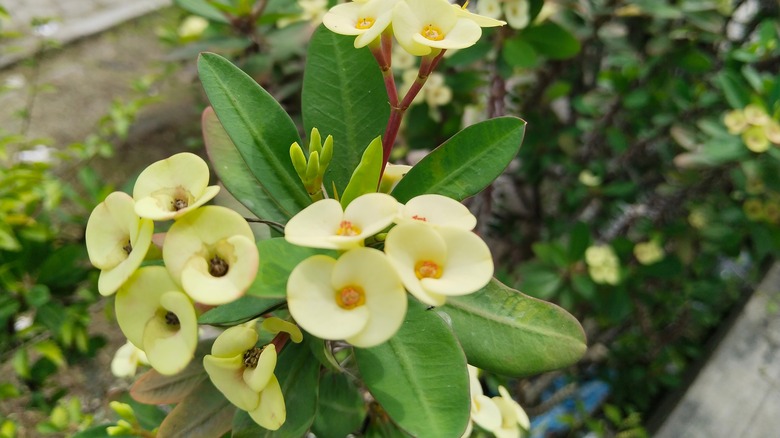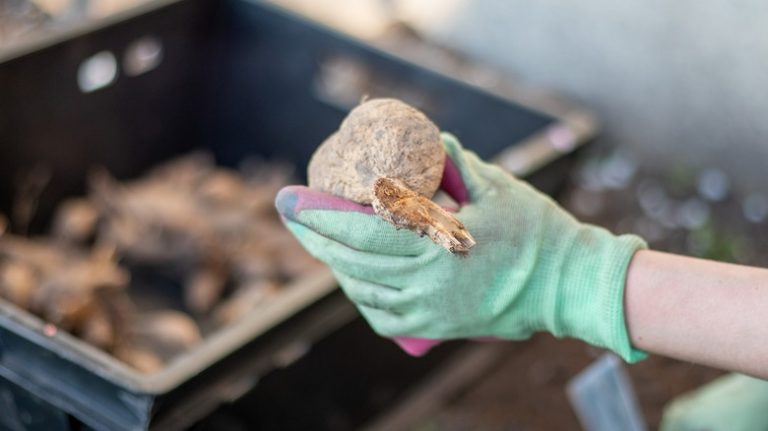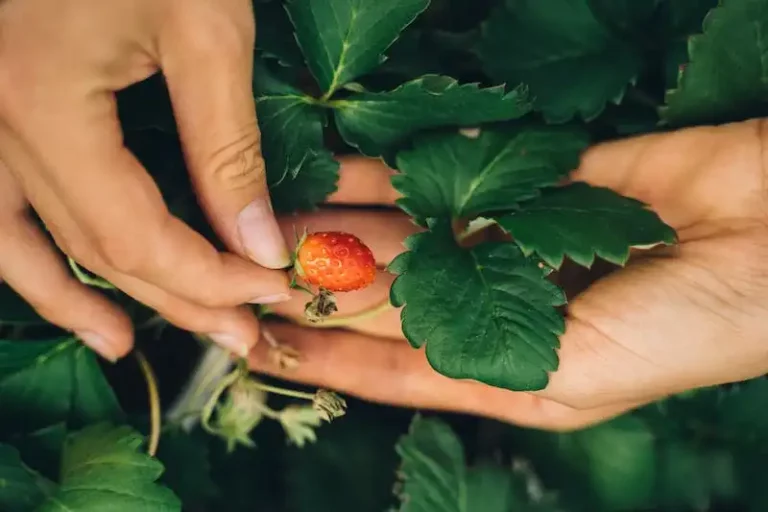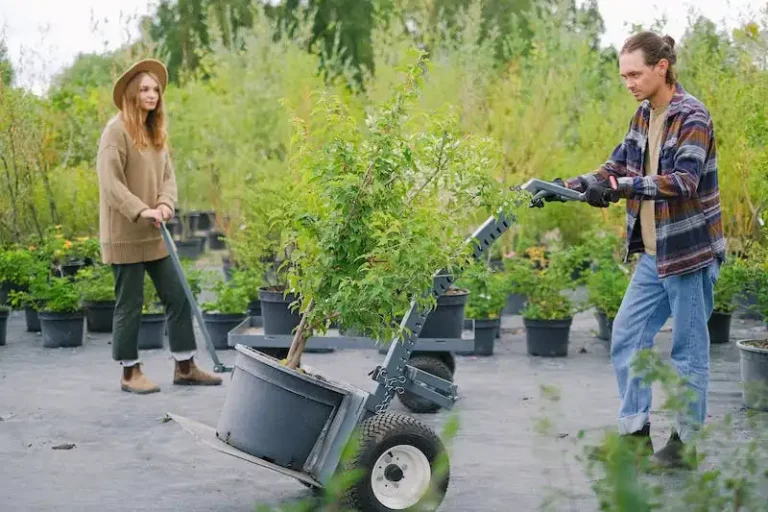If you’re contemplating adding euphorbia to your garden, it’s crucial to pause and consider some important aspects of this plant. Firstly, understand that certain euphorbia species, like the wood spurge and cypress spurge, have invasive plant traits. They spread rapidly via rhizomes. These underground stems extend horizontally, producing new shoots and roots. This allows them to dominate large areas quickly. Once these rhizomes establish themselves, they can be quite challenging to eradicate. Controlling their spread is key, but it requires consistent effort and vigilance.
The resilience of euphorbia seeds adds another layer of complexity. They can remain viable in the soil for up to a decade, ensuring a persistent presence. This means that once you plant euphorbia, it could influence your garden’s ecosystem for years to come. Consider this long-term impact, especially if you like to rotate or redesign your garden frequently. Additionally, the plant’s sap poses a significant health risk due to its toxicity. It can cause anything from mild to severe skin irritation upon contact, and if ingested, it’s harmful to both humans and pets. If your garden is a place where children or animals play, you need to seriously think about the potential risks. Beyond these concerns, remember that euphorbias vary widely in their care requirements. While some thrive in poor, dry soils, others need more nurturing environments. Your garden’s specific conditions will dictate which euphorbia species, if any, are suitable.
Understanding euphorbia: Origins, appearance, and diversity
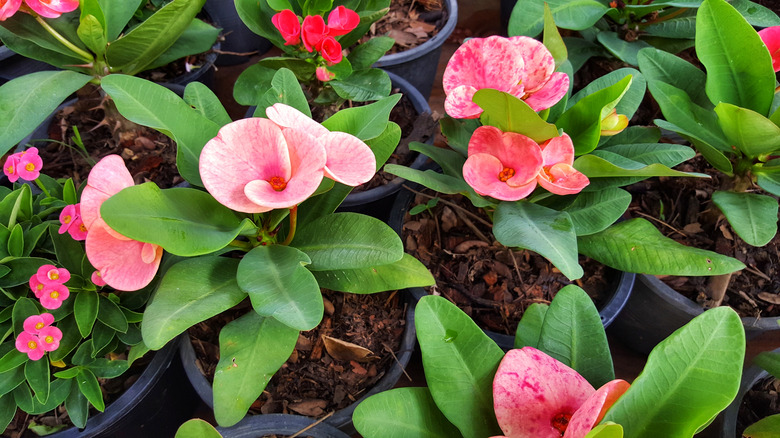
Delving into the world of euphorbia is like opening a botanical treasure chest. This diverse plant family, part of the Euphorbiaceae, boasts over 2,000 species, each with its own unique characteristics. Let’s break down what you need to know about these fascinating plants though, before you become enchanted by their variety. Euphorbias have various environmental preferences, which explains their remarkable adaptability and diversity. This diversity means there’s likely a euphorbia to suit any garden aesthetic, but it also requires you to be choosy to find the right match for your garden’s conditions.
The appearance of euphorbias is strikingly varied. Some resemble cacti, with thick, water-storing stems, perfect for drought-prone gardens. Others look like smaller shrubs. The “flowers” of euphorbias are unique too. What you might think are petals are actually bracts, which are modified leaves that surround the real, often inconspicuous, flowers. These bracts can be brightly colored, adding a splash of visual interest to your garden.
In terms of size, euphorbias are equally diverse. Some, like Euphorbia milii (aka crown of thorns plant), are compact and perfect for small spaces or containers. Others, such as the towering Euphorbia ingens, can grow over 30 feet tall, making a dramatic statement in larger landscapes. This variation in size is something to consider, especially if you have limited space or specific design aspirations for your garden.
Caring for euphorbia: Nurturing beauty, managing challenges
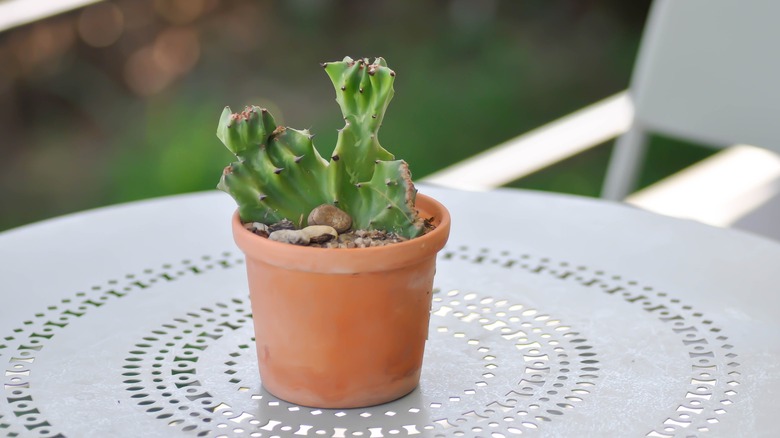
When it comes to nurturing euphorbia, the journey is as diverse as the species itself. This plant family’s adaptability is a blessing, but it also demands a keen understanding of each variety’s specific needs. Many euphorbias are praised for their hardiness, thriving in conditions that would challenge other plants. However, this resilience doesn’t imply a one-size-fits-all approach to their care. The key is to match the plant’s native habitat as closely as possible in your garden. Some will typically require well-drained soil and plenty of sunlight. In contrast, varieties from shadier, more temperate regions might need protection from the harsh afternoon sun and prefer moister soils.
In the first two years of growth, water your plants thoroughly during periods of drought to help them establish themselves in the soil. For container-grown plants, water them from spring to fall, aiming to maintain a slight dampness in the compost. Controlling euphorbia’s invasive tendencies is crucial. As mentioned at the start, the species that spread through rhizomes can quickly take over your garden if left unchecked. Regularly inspect their growth and create physical barriers to contain them. For those varieties known for their hardy seeds, it might help to promptly remove their seedlings to prevent flowering and reduce unwanted spread. You might also have to prune, dig, and thin them out to help control growth.

